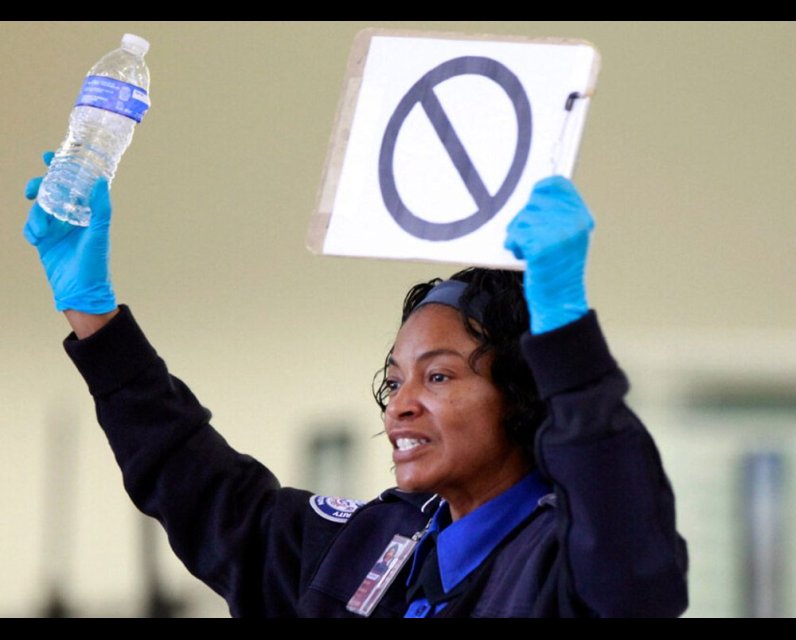Source Feed: National Post
Author: Amna Ahmad
Publication Date: July 19, 2025 - 07:25
U.S. may change or get rid of liquid limit for carry-ons, U.S. Homeland Security secretary says
July 19, 2025

The days of cramming travel-sized shampoo bottles into plastic bags could soon be over. U.S. Homeland Security Secretary Kristi Noem hinted that the longstanding liquid restrictions for carry-on luggage could be lifted.
During a conference hosted by The Hill in Washington, Noem said on July 16 that she was “questioning everything TSA (Transportation Security Administration) does” and hinted at potential revisions to the rules governing liquids in carry-on bags.
“The liquids, I’m questioning. So that may be the next big announcement, is what size your liquids need to be,” Noem said at the conference.
Her comments come about a week after she announced that passengers are no longer required to remove their shoes during regular TSA security checks, a change that went into effect immediately.
Here’s what you need to know about Noem’s comments about liquid restrictions in carry-on luggage and why the rule was implemented in the first place.
When did airlines start restricting liquids in carry-ons?
In 2006, authorities foiled a plan to use liquid explosives smuggled aboard carry-on luggage to blow up planes.
After the incident, the TSA banned all liquids in carry-on luggage. However, this ban was lifted after six weeks as it strained airline baggage systems, as more people were checking bags.
The FBI, along with other laboratories, found that a tiny amount of substances, those being small enough to fit into a quart-sized bag, could not blow up a plane. After that, the 3.4-ounce limit — or 3-1-1 rule — came into effect.
The rule stated that each container of liquid, gel or aerosol — whether it’s water, shampoo or hairspray — must be 3.4 ounces (100 ml) or less, all containers must fit into one quart-sized (one-litre) clear zip-top bag, and only one bag is allowed per passenger. Since then, TSA checkpoints have borne the familiar rituals of chugging water and tossing oversized containers, and fights over what’s considered a liquid or not.
After the restrictions were introduced in the U.S., other countries quickly followed suit with similar rules.
What does this mean for U.S. travellers?
For now, it is unclear how or when any changes to the liquid restrictions might take effect. Noem has not provided details on what a new policy could look like, whether that means lifting the size limit entirely, or just expanding it. Until then, passengers should expect to keep following the existing 3-1-1 rule.
Why is the U.S. considering changing this policy?
The TSA has been exploring changes to its liquid rules for years, but with recent advancements in technology, it seems more possible than ever.
Advanced computed tomography (CT) scanners are now being installed at security checkpoints across U.S. airports. These scanners generate detailed 3D images of the contents of carry-on bags and can automatically detect potential security threats, making it possible to carry bigger sized liquids through security.
Currently, U.S. travellers will still need to abide by existing TSA liquid restrictions, but with these advancements in technology, and the U.S. willing to change their approach, travellers may soon find themselves packing a little more freely.
“Hopefully, the future of an airport, where I’m looking to go is that you walk in the door with your carry-on suitcase, you walk through a scanner and go right to your plane,” Noem said at the conference. “It takes you one minute.”
What could this mean for Canada?
If the U.S. moves ahead with easing or eliminating its liquid restrictions, Canada may not be far behind. While Canadian travellers have not been required to remove their shoes for domestic or non-U.S. flights, those flying to the United States through pre-clearance areas have followed TSA protocols, including removing their shoes. Earlier this month, however, Canada aligned with the U.S. and dropped that requirement.
This quick alignment suggests Canadian authorities could follow suit if the U.S. were to ease up on liquid restrictions. So far, there has been no official word from Canadian authorities on whether such changes are being considered.
What are other countries doing?
In the United Kingdom, several regional airports, including London City and Edinburgh, have begun lifting liquid restrictions, thanks to the rollout of advanced CT scanners. The new technology allows passengers to keep liquids and electronics in their bags during screening and permits containers of up to two litres.
Similar changes are underway elsewhere.
At Qatar’s Hamad International Airport, select security lanes now let travellers leave liquids and laptops in their bags. This has also been made possible by upgraded CT scanning systems. In South Korea, major airports, such as Incheon and Jeju, are piloting the same technology on domestic routes, with plans to expand it more broadly in the future.
Our website is the place for the latest breaking news, exclusive scoops, longreads and provocative commentary. Please bookmark nationalpost.com and sign up for our daily newsletter, Posted, here.
The Union of B.C. Indian Chiefs opposes Bill C-5, and the B.C. Assembly of First Nations says most of the 204 nations in B.C are concerned about it.
July 19, 2025 - 11:00 | | CBC News - Canada
Michael Journal Prest, 20, of Ottawa, is expected to appear in court Saturday. Read More
July 19, 2025 - 10:12 | Norman Provencher | Ottawa Citizen
NORAD's director of operations says U.S. F-15 fighter jets were in the right place at the right time, making it logistically smarter to deploy them in response to Tuesday's alleged hijacking of a plane.
July 19, 2025 - 10:00 | | CBC News - Canada


Comments
Be the first to comment